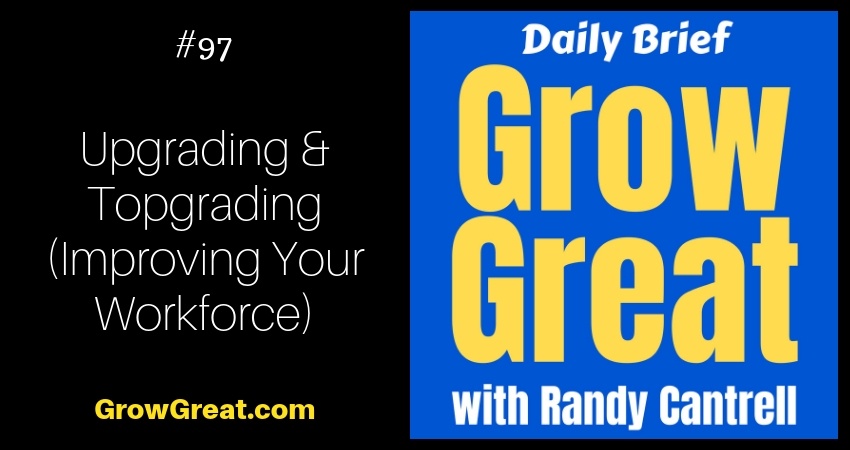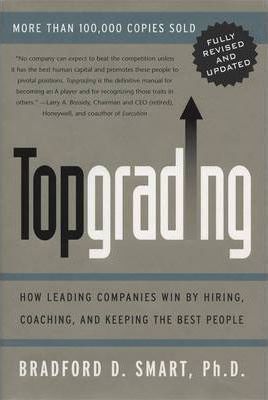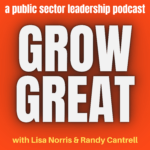Podcast: Play in new window | Download (Duration: 10:03 — 9.7MB)
Subscribe: Apple Podcasts | Spotify | RSS | More

Last week a new Gallop Poll reported the number of employed Americans has never been higher. The unemployment rate is 3.7 percent, the lowest since 1969.
Yet CEO’s and business owners continue to lament how difficult it is to find “good people.” Said one CEO, “I just need people who know how to work.” He wasn’t talking about people who lacked the skill. He was complaining about how difficult it is to find people with a dedication required to be high achievers in his company. It wasn’t as if he was being overly demanding. He commented about people following through on what they were supposed to do – and what they commit to doing. Things he felt were basic, fundamental and “common sense” things.
A software entrepreneur told me finding developers was growing increasingly more difficult for her firm. “Even mediocre talent costs way more than it should,” she said.
A clothing retailer feels stuck with part-time and transitory employees who aren’t finding the work career-oriented. The turnover is taking a toll on his ability to grow as much as he’d like. And the added strain on his life, too.
 Across all sectors, it seems people are challenged to upgrade, or topgrade their workforce. “Topgrading: How Leading Companies Win by Hiring, Coaching and Keeping the Best People” by Bradford D. Smart was a book published in 1999. It spoke of the need to have superior people if you’re going to build a superior company. Mr. Smart’s advice – and his company – focus on being able to assess people so you can acquire top level talent.
Across all sectors, it seems people are challenged to upgrade, or topgrade their workforce. “Topgrading: How Leading Companies Win by Hiring, Coaching and Keeping the Best People” by Bradford D. Smart was a book published in 1999. It spoke of the need to have superior people if you’re going to build a superior company. Mr. Smart’s advice – and his company – focus on being able to assess people so you can acquire top level talent.
For some of us, that’s completely practical. For others of us, it’s impractical. Thankfully, many of us can operate successful businesses with good to great employees. We don’t necessarily require the very best, but we may need to upgrade.
The wheelhouse of my work focuses on enterprises achieving a few million bucks a year up past $100 million a year. For each of these companies, the difference in achievement between mediocre or average workers and good or very good employees is noticeable. Every CEO and entrepreneur says so. But not each of them are necessarily willing to do the necessary things to make the improvement. Some just wish things would magically be better. Others are working hard to figure out ways to make it better. I’m hoping you’re among that latter group.
So what do we do if we want to upgrade our workforce?
First, and this is going to be overly obvious, but I’ve often found that we get so bogged down we often overlook the obvious. Examine your habits and practices to discover what has worked well in the past versus what hasn’t worked well.
Have you ever had a problem with something say electrical? Perhaps it wouldn’t turn on. Only to find out it wasn’t plugged in? I suspect we’ve all done it. Embarrassingly we’ve discovered the problem after spending too much time thinking of every other possibility. We overlooked the first place we should have looked. Ditto with this problem.
It’s certainly possible, if not probable that what once worked won’t work any longer. Or at least as well. But sometimes we simply drifted away from a practice that was producing good results. It’s worth looking into.
Do more of what works. Do less of what doesn’t.
Perhaps parts of what you once did – that worked well – are worth reinstating. Be creative. Think it through. Discuss it with your leadership team to get feedback.
Second, figure out your employment constraint. What’s the problem?
This varies. Sometimes wildly. I know entrepreneurs in some parts of the country where the challenge is systemic of their location. Maybe they’re in an area where the economy is driven by tourism, but they’re not in the tourism business. That’s not the same challenge as another entrepreneur in a small college town where most of the applicants are young people looking to get part-time hours, not make a long-term career choice.
Whatever the constraint is — identify it so you can figure out the depth and breadth of the problem. The business owner in a tourist town isn’t going to alter that dynamic. She’ll have to figure out a way around that problem. Ditto for the college town business owner. But you’re challenge and constraint may not be related to such things at all.
Some owners are battling better paying job opportunities in other industries. Industries where the profit margins afford higher wages than they’re able to pay. In some cases, much higher. What do you do? You commit to figuring it out. For example, I know retailers who closely examined their workforce in detail and their hours of operation. By adjusting the number of workers scheduled at various times they were able to upgrade their compensation programs to improve productivity with fewer employees. The result? Happier employees with improved incomes and better opportunities. Such ideas come mostly from facing the reality that the future isn’t going to be defined by the past. It’s about getting unstuck and letting go of how things were once done.
You can’t figure out solutions until you first know why you’re experiencing the challenge or the constraint. Make sure you can prove the constraint. Don’t just jump to a conclusion. “We can’t get good people because we just can’t find anybody willing to work for $12 an hour.” Or, “We can’t find people willing to work the hours we need.” Are these assumptions or do you have evidence?
Be an evidence-based leader!
As much as possible, know the answer. The truth will help set you free!
Third, deploy creativity to solve the problem. Do you want to know the biggest opportunity most companies have when it comes to upgrading people? Baby boomers. People over 50 years old have proven superior to many employers willing to give them a chance. They have maturity, life experience, good manners, strong work ethic and don’t always need top dollar because they’re often searching for other things at this stage of their lives. Too many entrepreneurs though discount them, thinking they’re unable to learn new skills, or adapt, or follow instructions. Those are false assumptions. Jaded viewpoints that make as much sense as throwing all Millenials under the bus of “they don’t know how to work hard.” Don’t write off an entire segment of the population because you’re biased against them. Open yourself up to the possibility that you can upgrade your workforce after you upgrade how you think. And how you approach the challenge.
Lastly, share the vision, mission, and purpose. Don’t assume people get it. Help them get it. So many people are clamoring for a cause. A sense of purpose. An answer to the one-word question, “Why?” If you’ll be more passionate and clear about that with your employees, you’ll see a shift that may surprise you. A positive shift where mediocre work becomes good, good becomes great — and people behave as though their tanks are full.
Don’t overlook or minimize our common desire and need for significance and purpose. As the leader of your parade, you’ll attract the people willing (and able) to help if you’ll openly share your own purpose and significance and help each person achieve that for themselves in the context of the work inside your company.
Be well. Do good. Grow great!

Listen to the podcast
 About the hosts: Randy Cantrell brings over 4 decades of experience as a business leader and organization builder. Lisa Norris brings almost 3 decades of experience in HR and all things "people." Their shared passion for leadership and developing high-performing cultures provoked them to focus the Grow Great podcast on city government leadership.
About the hosts: Randy Cantrell brings over 4 decades of experience as a business leader and organization builder. Lisa Norris brings almost 3 decades of experience in HR and all things "people." Their shared passion for leadership and developing high-performing cultures provoked them to focus the Grow Great podcast on city government leadership.
The work is about achieving unprecedented success through accelerated learning in helping leaders and executives "figure it out."

